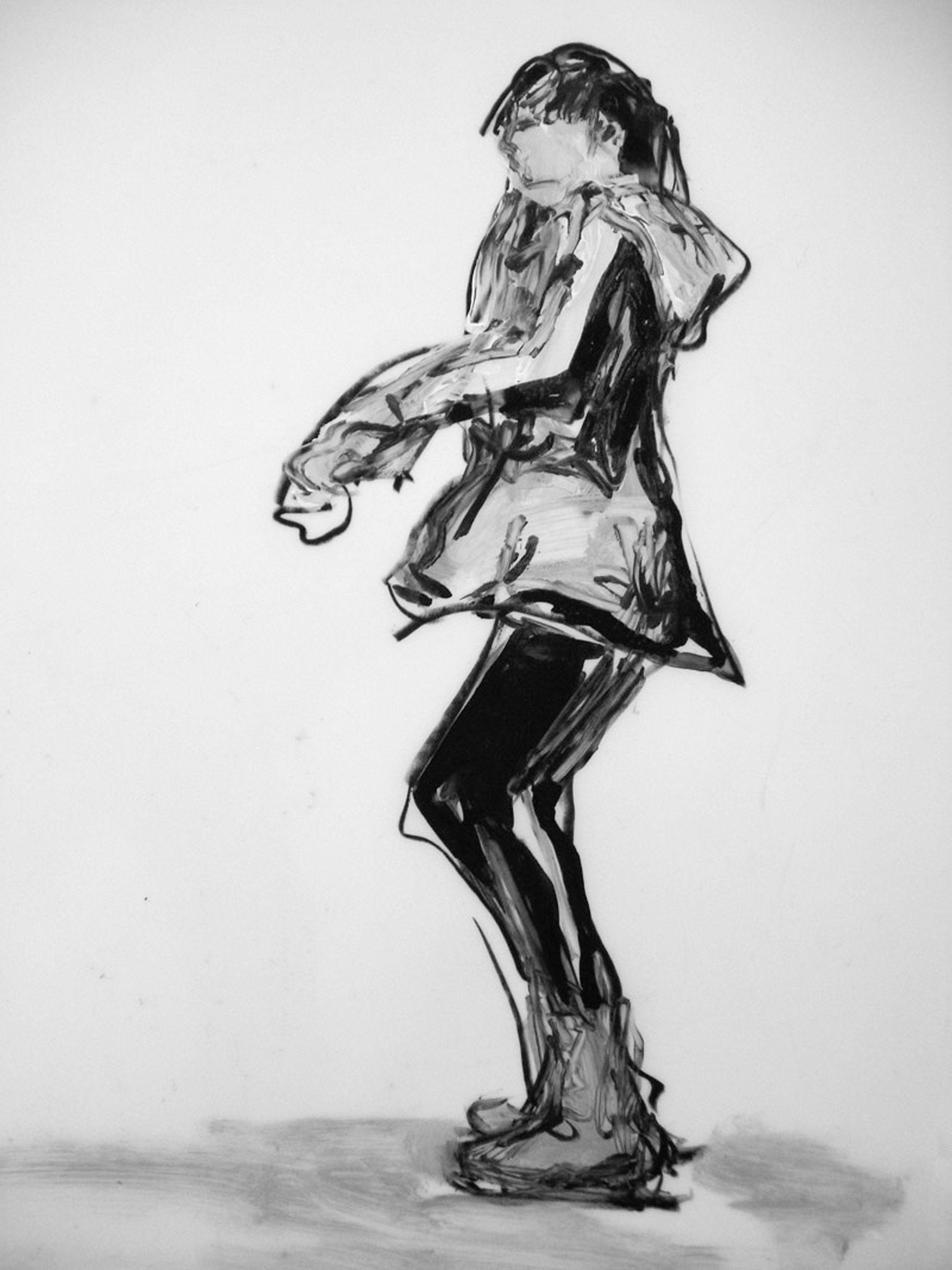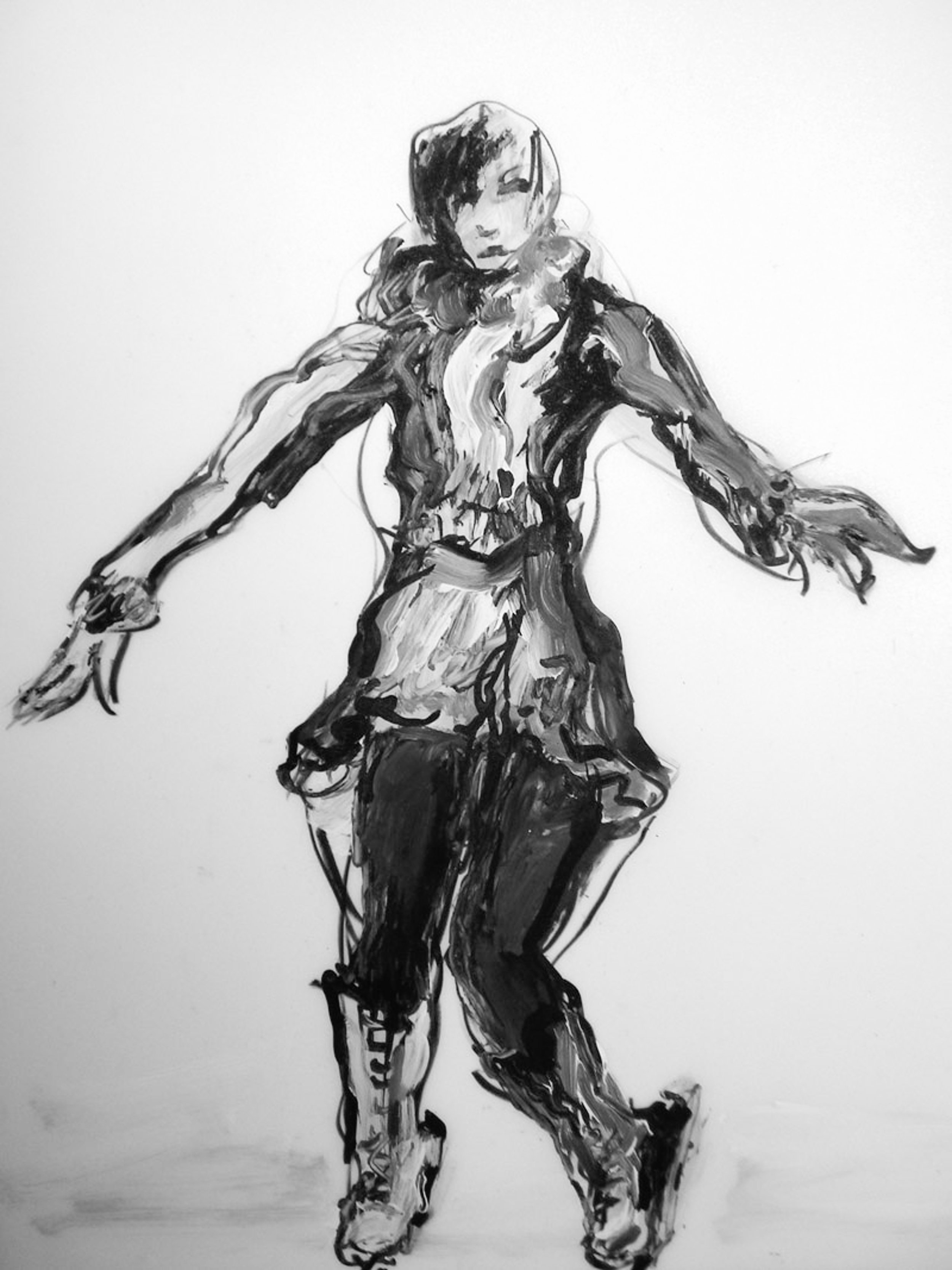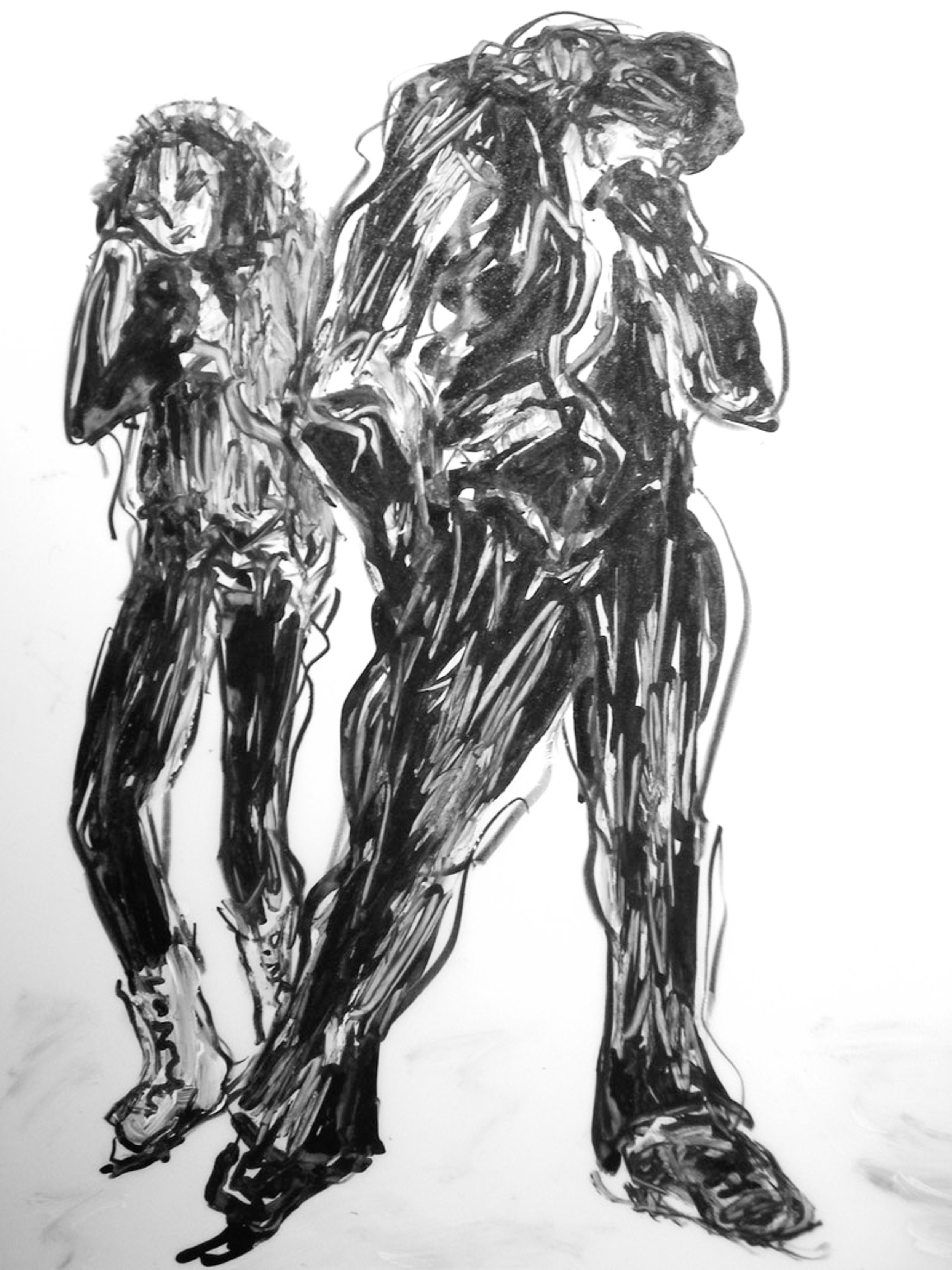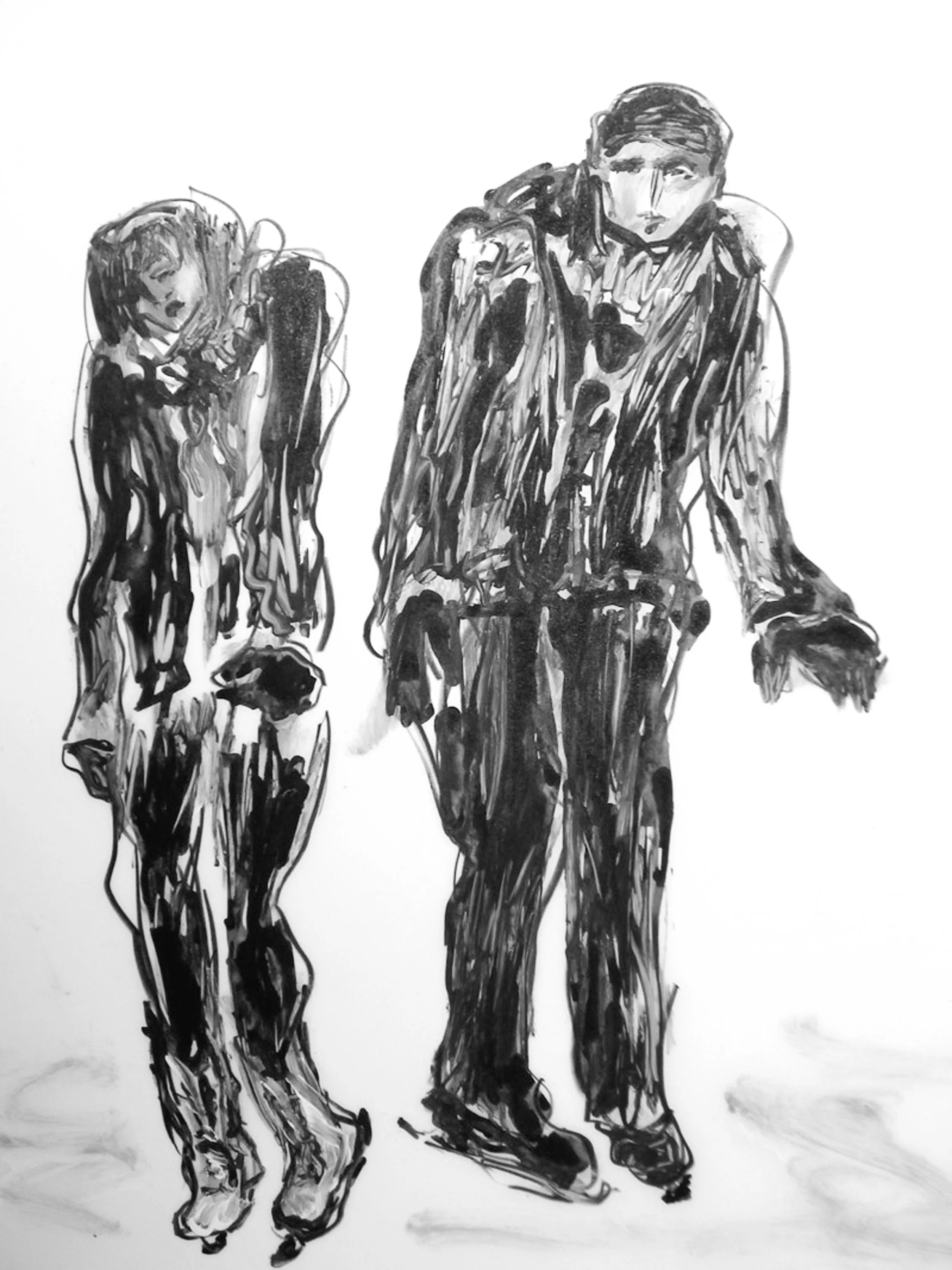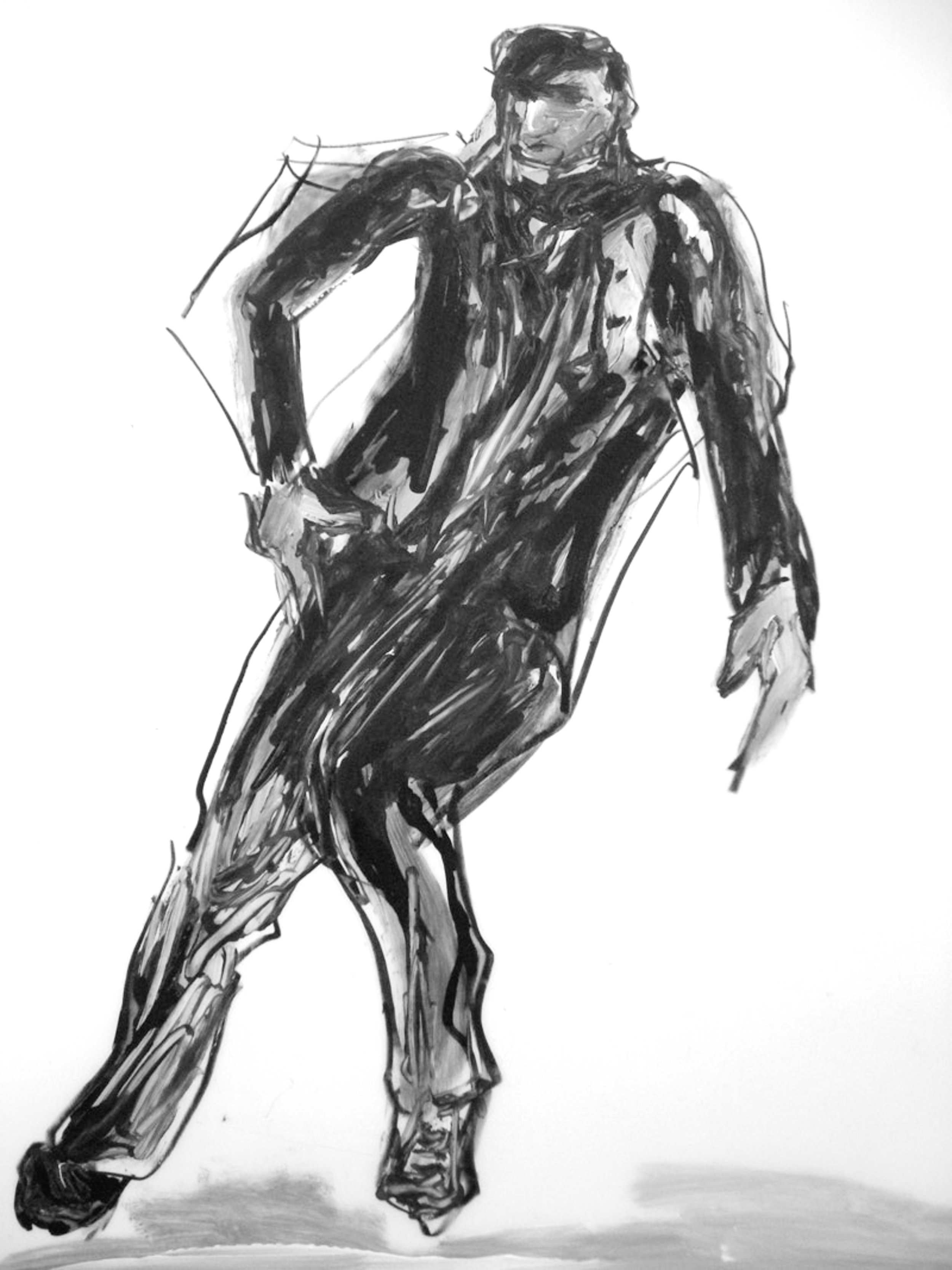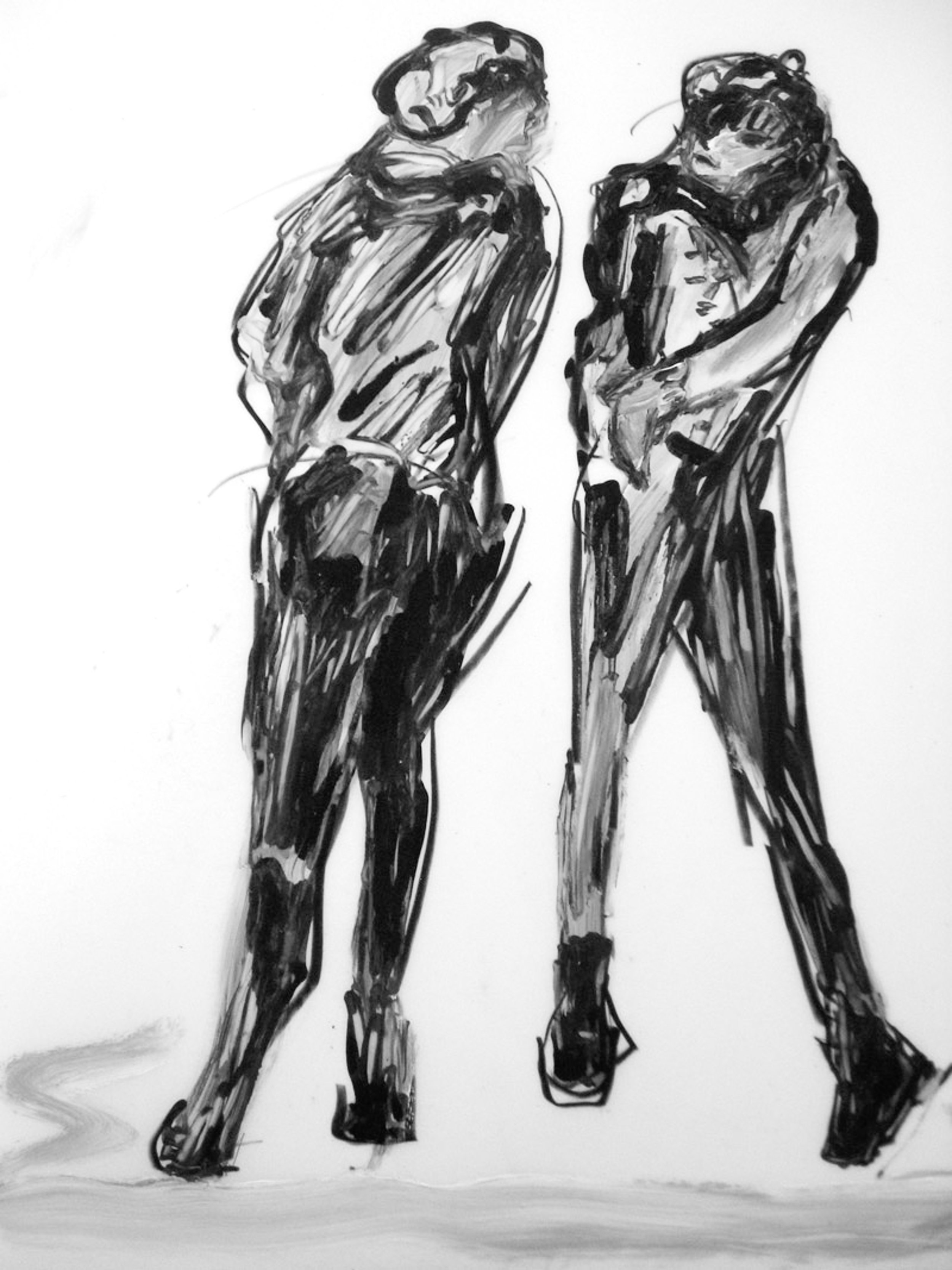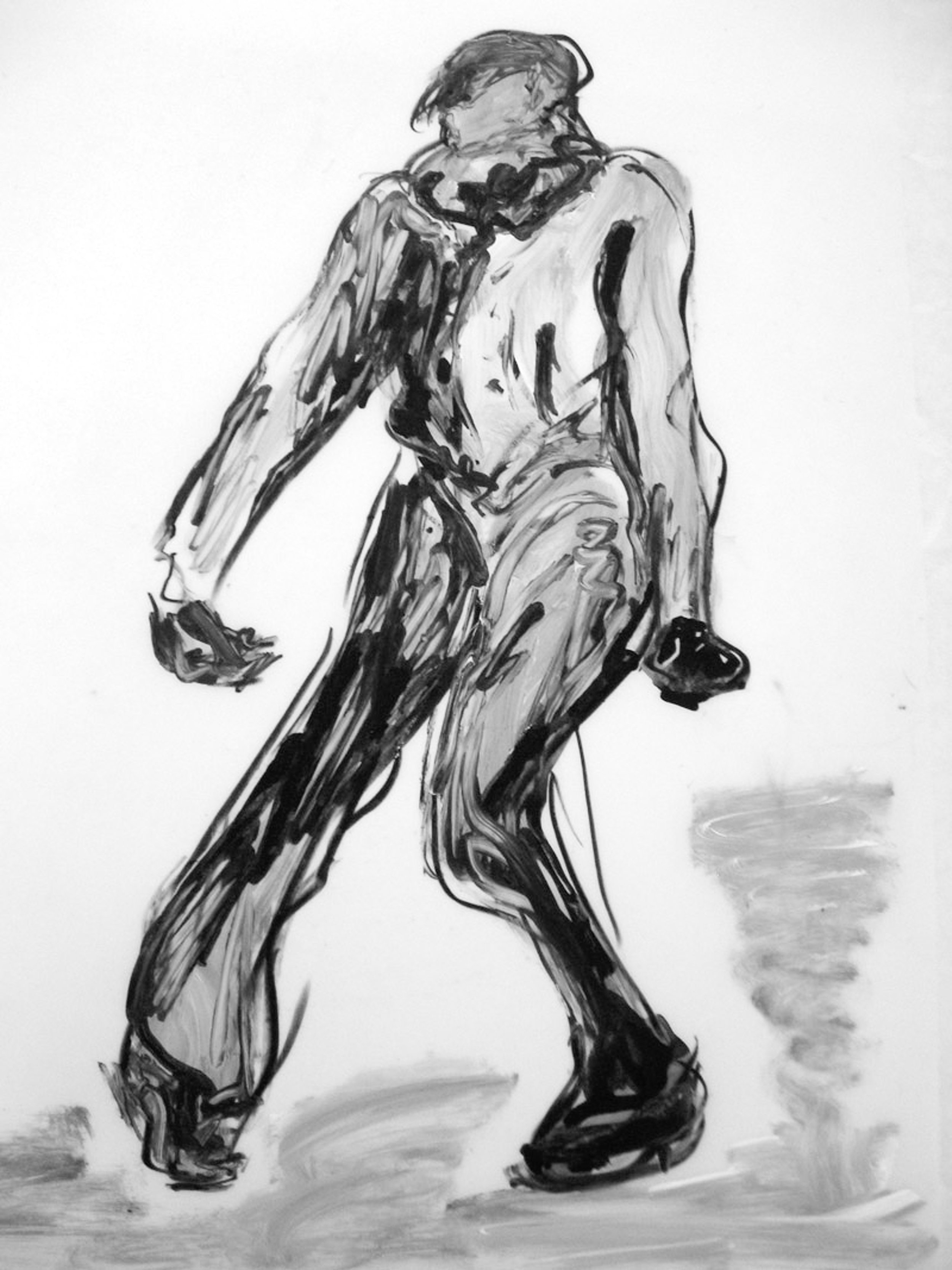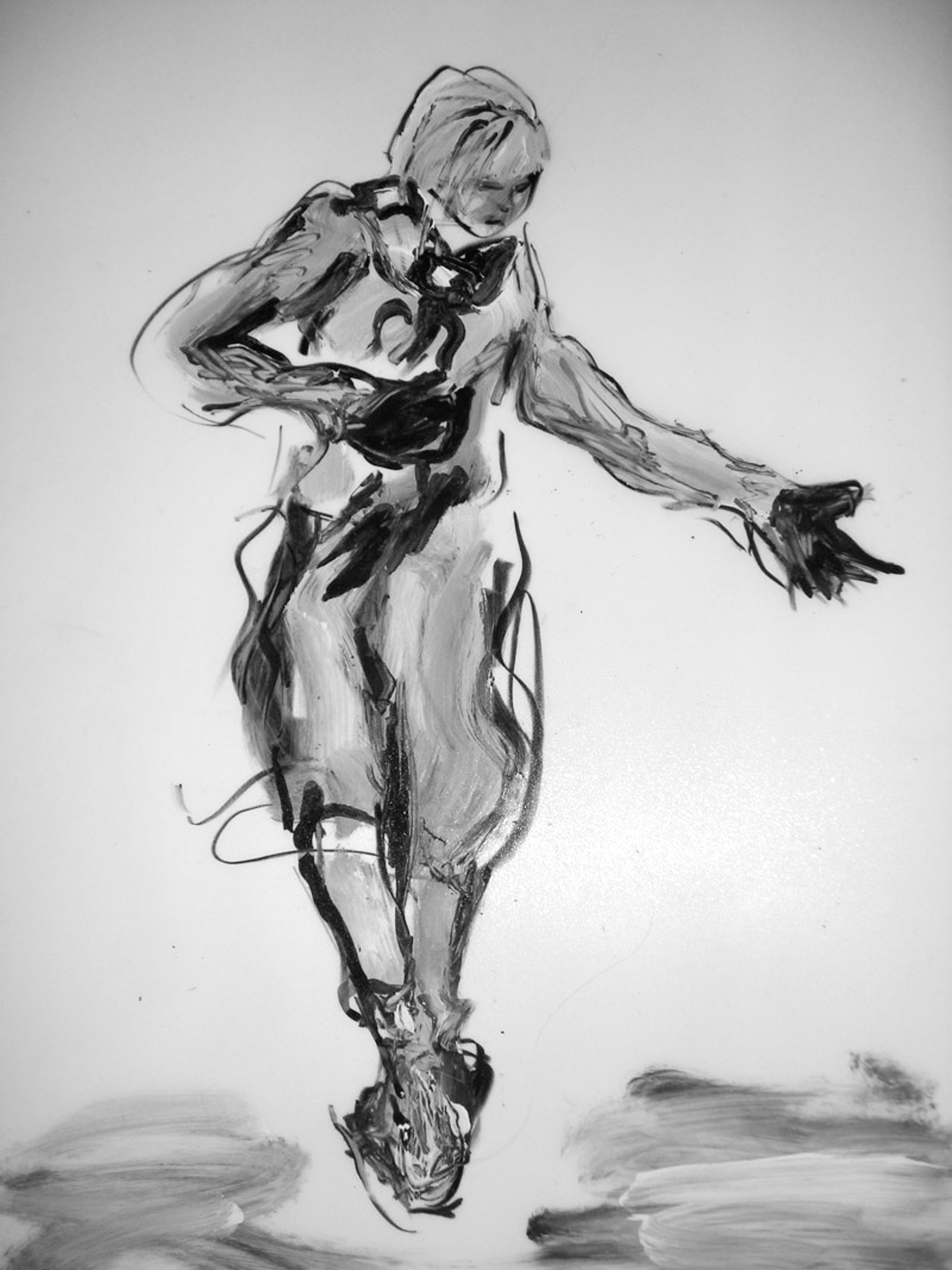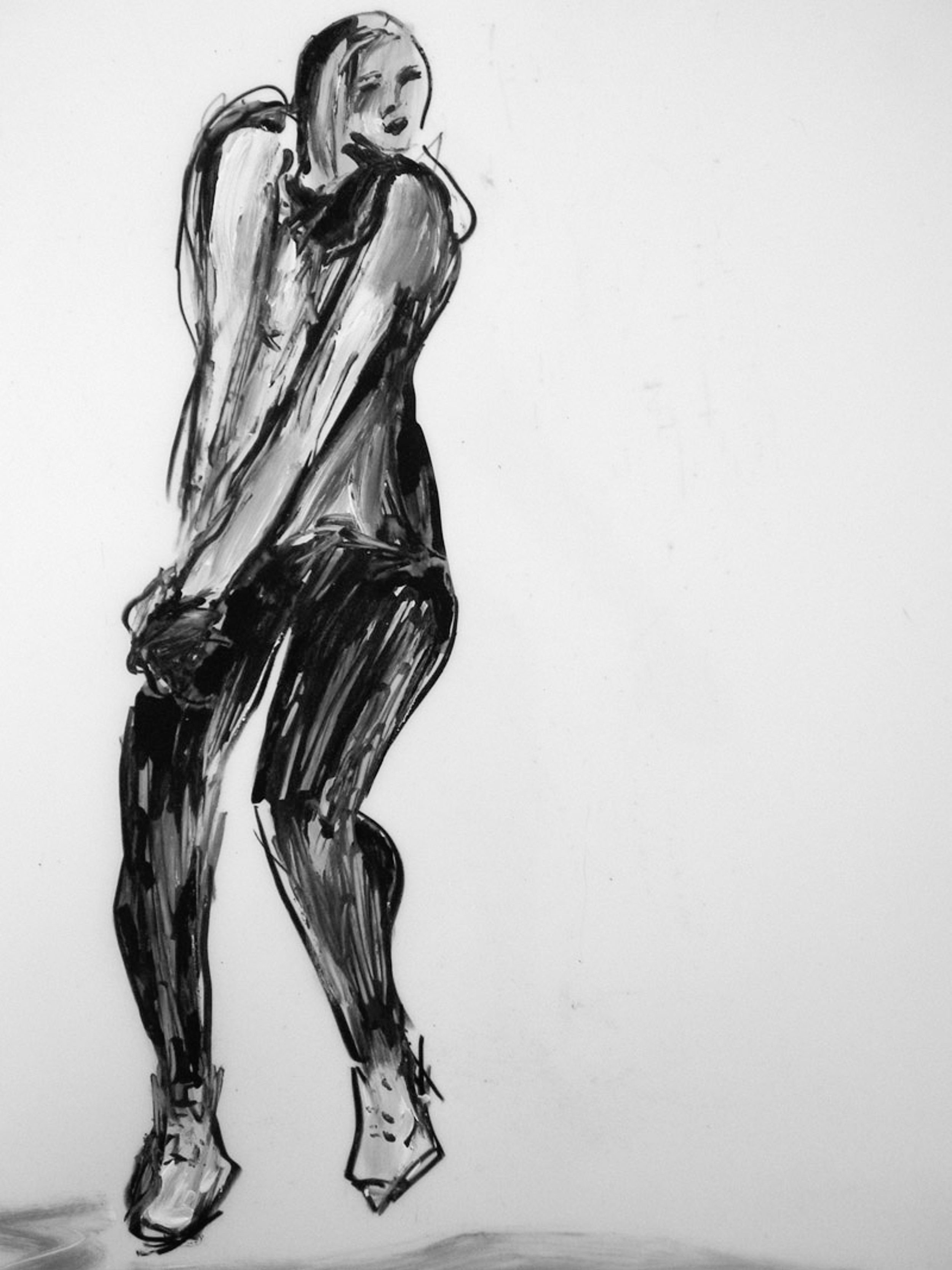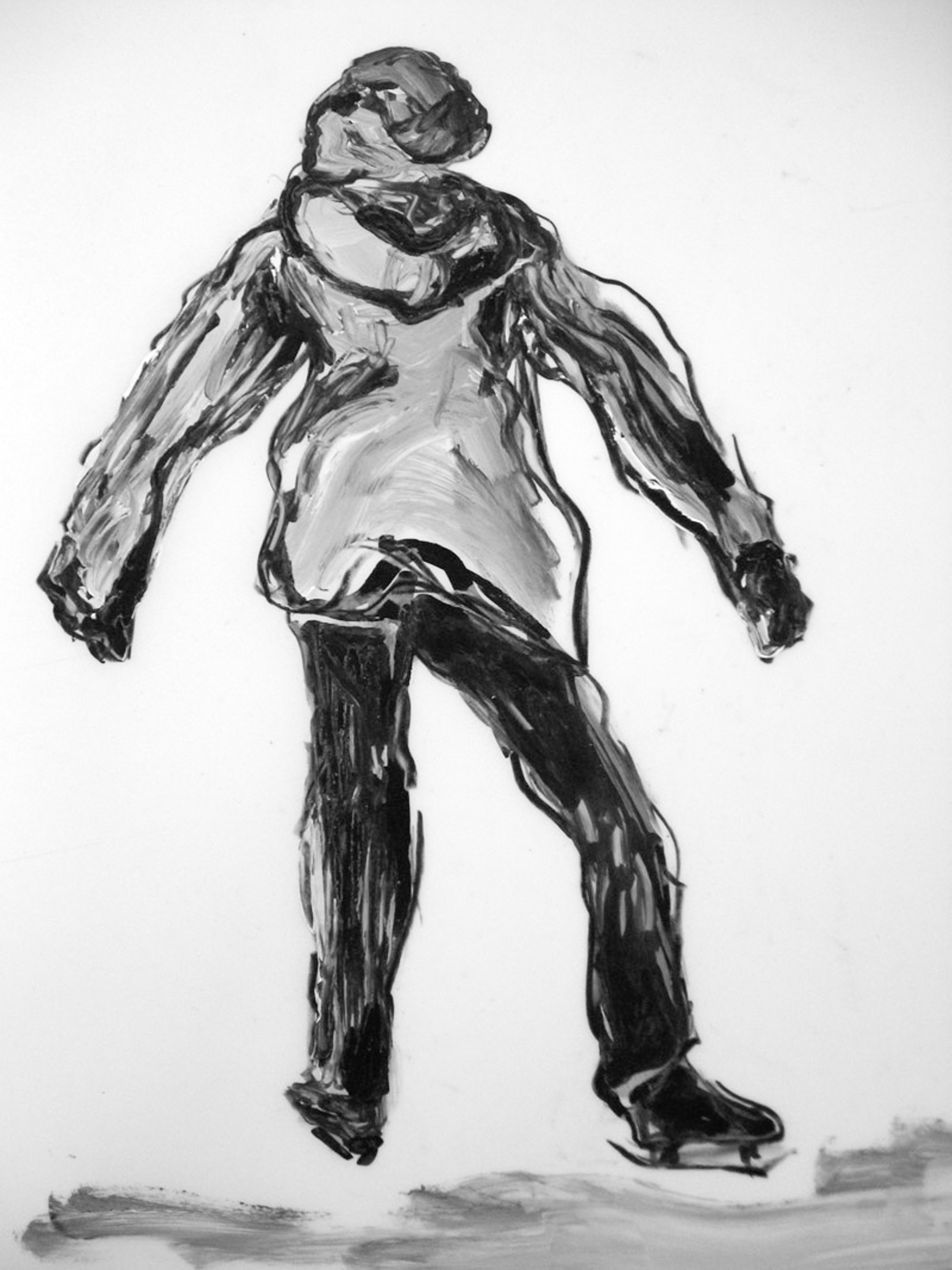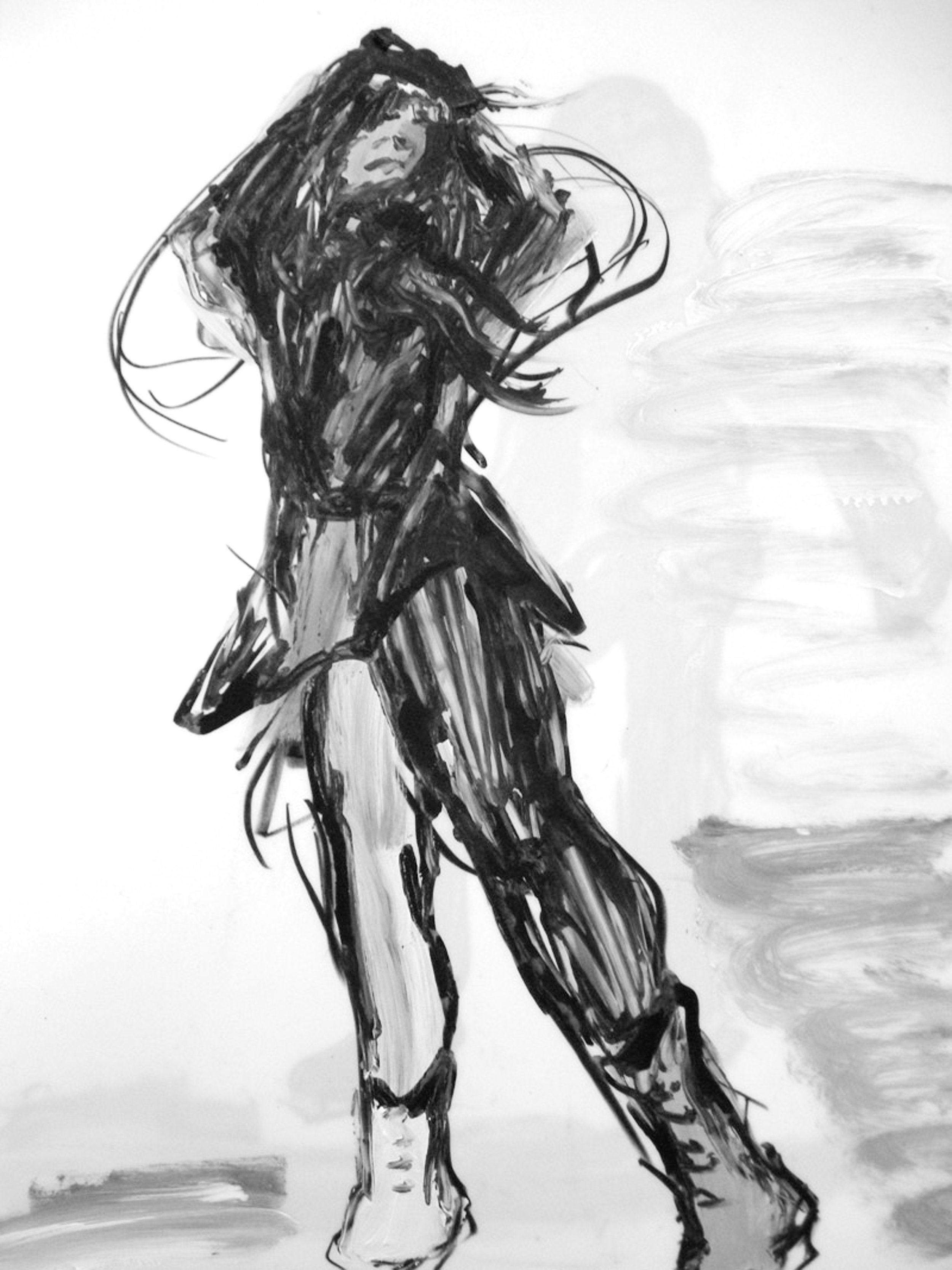Skate
Skating on Thin Ice
Skating on thin ice. There is a constant focus on control. There is the constant threat of loss of control. There is an element of the unknown, unpredictable, unforeseen—that one movement, that one gesture to be avoided. Skating on ice. The glide, the speed, the whoosh of movement, the air against face, the curve, the leaning in, the flow. All the individual sensory rush coupled with the social spotlight. Performance, encounter, wooing, winning. A lifetime of character and determination exercised through form and style. And all rendered in motion. As the ink flows, unencumbered by the drag of paper, it finds no resistance on this synthetic plane, this plastic platform. The ink stretches, streaks, spreads. And as the drawing appears, there is a constant focus control. There is the constant threat of loss of control. There is an element of the unknown, unpredictable, unforeseen—that one movement, that one gesture.
Paintings: oil on canvas. 30" x 15". 2011.
Drawings: mixed media on yupo. 14" x 11". 2009.
Skaters
Wurm's collection "Skating on Thin Ice" captures the iconic wintertime activity in a varied manner which presents a sweet counterbalancing act between mixed media drawings on yupo depicting skaters which vibrate with movement and frenetic energy and five oil on canvas paintings which impress the dreamlike serenity of skating upon the viewer.
The drawings appear almost counterintuitive in their sharp and fragmented use of line. However, together they form a series reminiscent of the quick figure sketches captured in a model's thirty second pose. This association lends the pieces fluidity and yet a sense of spontaneity and candidness which attract the eye and keep the viewer engaged. We are drawn further into the pieces by the magnetic quality of the inky blacks Wurm utilizes to emphasize certain aspects of the figures, in one piece we are drawn to the twist of a skater's body by the deep tones suggesting her turning head, in another we focus on the figures' hands cradling her face, brought into focus by the contrast of white arms against her dark clothes. This last position is made all the more captivating by its unusual juxtaposition in the context of ice-skating. In such ways Wurm guides us to focus on different aspects of the body and the way it moves. In the paintings the figures almost float across their iced backdrops, so fluidly captured that they can appear to flicker between swimming under water and skimming across its frozen top.
Viewers find themselves caught up in the bold lines Wurm uses to outline the figures, lines which seem to imitate the flow of skates on ice in their deep and firm strokes. The crispness of the brushstrokes on the paper suggest they can bear - and hold in place- the weight of the figure, cementing their balance even against the slippery backdrop of icy-blue paint behind them.
The lean of the body and the directive quality suggested therein become the predominant expression of figures which don't deliver strong emotion in the usual focal point of the face. A lack of high detail in the face allows viewers to focus on the expression of the forms themselves. The painting of the female skater guides the eye from the upper left tucked arm and shoulder- down its counterbalancing outstretched arm- and into the pointed toes of her feet. This directional sense lends the piece gravity and grace which echoes the delicate balance and focus of the skater's task. The serene focus suggested by the simple and carefully chosen strokes making up the skater's face amplify the overall meditative tone of the collection of works. In other works in this collection the same sentiments are expressed through varying subjects and figural expression.
"Skating on Thin Ice" pulls in a viewer to experience the art of skating visually. The viewer becomes implicated in the very act depicted as we trace the curving, clear and defining lines making up the skaters we see. The direction in which the lines lead us to experience the piece mimic the path of the skater themselves while enforcing the crucial balance in which the skater is suspended upon their icy ground.
Consistent throughout the pieces is the theme of concentration -even of meditation-through fluid movement. The theme ripples through brushstrokes as smooth and defined as the skater's journey across ice and a treatment of the body which is reflective and engenders the viewer's returned thoughtfulness. In pieces involving more than one figure this sense extends into the implied relationship between the skaters- evoking a sense of shared intuition and empathy. Alone, the skaters evoke the confidence of sure footing and the calmness of inner self-awareness. We are left with an impression of the beauty of movement and a reminder of the capabilities of simple lines and age-old traditions to bring the body and the mind into alignment and focus.
— Hannah Robie, 2012






